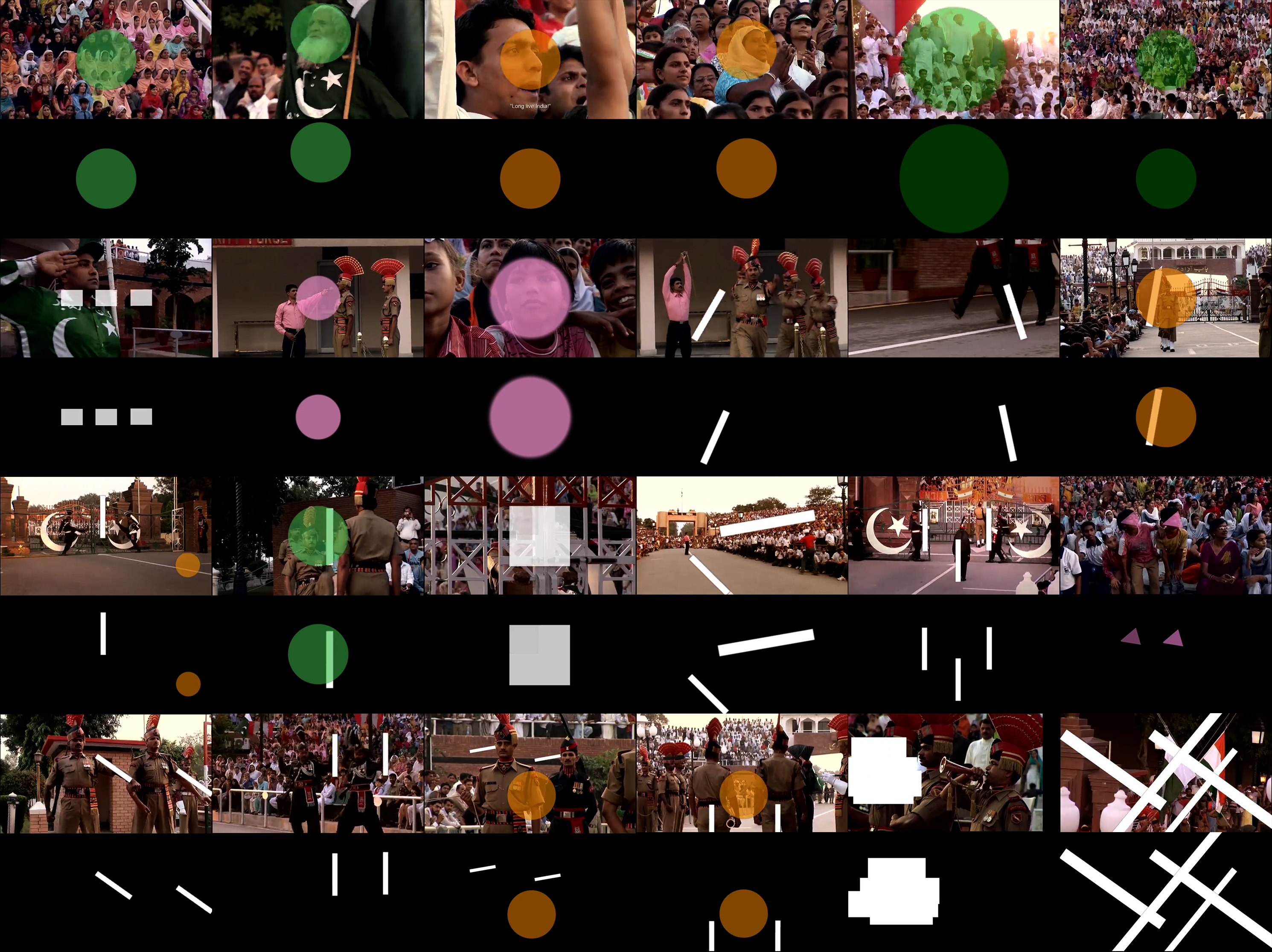Ритмические траектории: Визуализация ритмов в кинематографических секвенциях
DOI:
https://doi.org/10.17892/app.2018.0007.146Ключевые слова:
Джон Кассаветис, Силвия Русев, Сеприё Сен, монтаж, ритм, движение, жест, визуализация, творческое исследование.Аннотация
Ритмические Траектории — это цикл коротких этюдов, целью которых является акцентирование ритмических элементов определённых кинематографических секвенций с помощью визуальных и звуковых средств. В моей деятельности в качестве режиссёра монтажа и исследователя я тяготею к практикам, позволяющим выявлять и визуально выражать кинематографический ритм. Я придерживаюсь идеи Карел Пёрлман, утверждающей, что “функция ритма состоит в том, чтобы создавать циклы напряжения и разрядки, а также синхронизировать физические, эмоциональные и когнитивные вибрации зрителя с ритмами кинофильма.” (Пёрлман, 2009: 61) Это те ритмические траектории, которые составляют наше чувственное, кинестетическое знание о фильме. В моих работах проявляется интерес к визуализации этих траекторий, что добавляет уровень глубокого внимательного прочтения отдельно взятого кинематографического эпизода при сохранении исходного визуального материала. Данный исследовательский проект расположен на пересечении информационной визуализации, digital humanities и творческих практик, что оказывается возможным благодаря комбинации методологических решений.
Данная публикация состоит из двух визуализаций и их письменного обоснования, заостряющего внимание на исследуемых вопросах, позиционирующего исследование в рамках различных областей знаний и дающего представление о творческом процессе создания первых двух визуализаций. В первом этюде используется фрагмент короткометражного документального фильма Wagah (Сеприё Сен, 2009, Германия/Индия), смонтированного самим автором, в котором изображена причудливая хореография церемонии спуска флага на границе Пакистана и Индии. Это видео-эссе анализирует то, как ритм может быть сформирован на основе различных элементов, таких как звук и движение, цвет, графические формации, монтажные склейки и т.д. Я разбираю ритмическую структуру на части и формализую её, чтобы достичь абстрактной системы обозначений для репрезентации движения. Второй этюд главным образом нацелен на ритм жестов. Он основан на сцене из фильма A Woman Under Influence/Женщина под влиянием (Джон Кассаветис, 1974, США), смонтированного Дэвидом Армстронгом, в которой героиня Джины Роулендс неистово жестикулирует во время ссоры с её экранным мужем, которого сыграл Питер Фальк. В этой сцене — крупный план жестов, которые определяют и направляют разговор. Используя похожий метод визуализации, я заменяю жесты цветными блуждающими линиями.

Загрузки
Опубликован
Как цитировать
Выпуск
Раздел
Лицензия
Copyright (c) 2018 Кино, медиа и цифровая культура Центральной и Восточной Европы

Это произведение доступно по лицензии Creative Commons «Attribution» («Атрибуция») 4.0 Всемирная.





